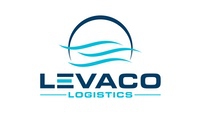What you need to know before embarking on the journey
Due to their nature some goods are classified as dangerous or hazardous. When shipping these types of goods, specific conditions are required for ground, air, or ocean transport. The goods’ class and quantity limits need to be determined and the required documentation, packaging, labelling, and transport modes need to be considered. Without proper documentation, dangerous cargo simply cannot be transported. It’s therefore no surprise that shipping hazardous goods requires trained personnel, specialised containers, and proper documentation.
A wide variety of items and substances
Dangerous goods are substances or items that, if not handled or packed correctly, could pose risks to health, safety, or the environment. There are different types of dangerous goods, in solid, liquid, or gaseous forms and can also be corrosive. Even everyday items like perfumes or lithium batteries can be considered as dangerous. These goods are classified according to the type of potential hazard, such as flammable, poisonous, explosive, or radioactive. To ensure safe transport, the United Nations has established a universal system with nine classes. They each have their own regulations in terms of classification, packaging, marking, and labelling.
The nine classes are:
- Explosives
- Gases
- Flammable Liquids
- Flammable Solids
- Oxidising Substances and Organic Peroxides
- Toxic and Infectious Substances
- Radioactive Material
- Corrosives
- Miscellaneous, including substances and articles that present a danger during transportation but do not fall into the other categories.
Packing requirements
Shipping agents must adhere to specific packaging and labelling requirements. The UN has established three packing groups to determine the degree of packing required for a particular commodity. Further, containers must mention the 4-digit UN-number, a code assigned to a single substance or group of substances, and the PSN (proper shipping name), which describes the cargo. Prepare all the necessary documents and ensure that the correct label is used and remove all the old labels to avoid errors.
Tank containers are often used for transporting dangerous goods, since they generally provide safe conditions and enable bulk transportation. Avoid stuffing containers and use special materials such as tape, zip ties, and poly bags to secure the goods.
Documentation
When shipping dangerous goods, you need to submit a set of documents that prove you are compliant with the regulations that prevent infractions to safety, health, and the environment from happening. These documents will facilitate customs clearance at ports:
- Material Safety Data Sheet (MSDS): This document provides information about potential hazards and safe handling of the dangerous goods during transportation.
- Dangerous Goods Declaration (DGD): to identify the category of the dangerous good, it includes identification marks, specifies the required special packaging, and labels.
- Dangerous Goods Manifest (DGM): this document provides all the necessary information about the dangerous goods being transported.
- Transport Emergency Card (TREM Card): This card contains emergency instructions about the transportation of the dangerous goods, and workers dealing with hazardous goods carry it.
- Container Packing Certificate: This document highlights the container’s identification number and certifies that the packing is in accordance with the specified instructions.
Different guidelines for different modes of transports
Specific rules apply to the different modes of transport, whether by air (DGR), sea (IMDG), road, rail, or inland waterways.
For air transport, airlines, freight forwarders, ground handlers, and shippers depend on the IATA Dangerous Goods Regulations (IATA DGR) manual to ensure the safe and efficient transportation of dangerous goods. For sea transport, the IMDG Code was developed as an international code for the maritime transport of dangerous goods in packaged form. The purpose is to enhance and harmonise the safe carriage of dangerous goods and to prevent environmental pollution. The port of Antwerp requests that all hazardous cargo complies with the Code for Hazardous Cargo.
A trustworthy partner
Transporting dangerous goods requires strict adherence to regulations. These regulations vary based on the type of goods being shipped and may cover aspects such as documentation, packaging, marking, and labelling. Levaco’s highly experienced staff is experienced in handling dangerous goods and are familiar with the IATA DGR and IMDG Code. Partnering with Levaco ensures that your company stays compliant with the ever-changing regulations of the port. Levaco is equipped to handle the mandatory declaration of hazardous goods to the port authorities for all export, import, and transit goods, and can provide guidance and pre-checks to prevent transport problems. In addition, Levaco has specialised warehouses in Antwerp with official licences to store and handle dangerous goods.







